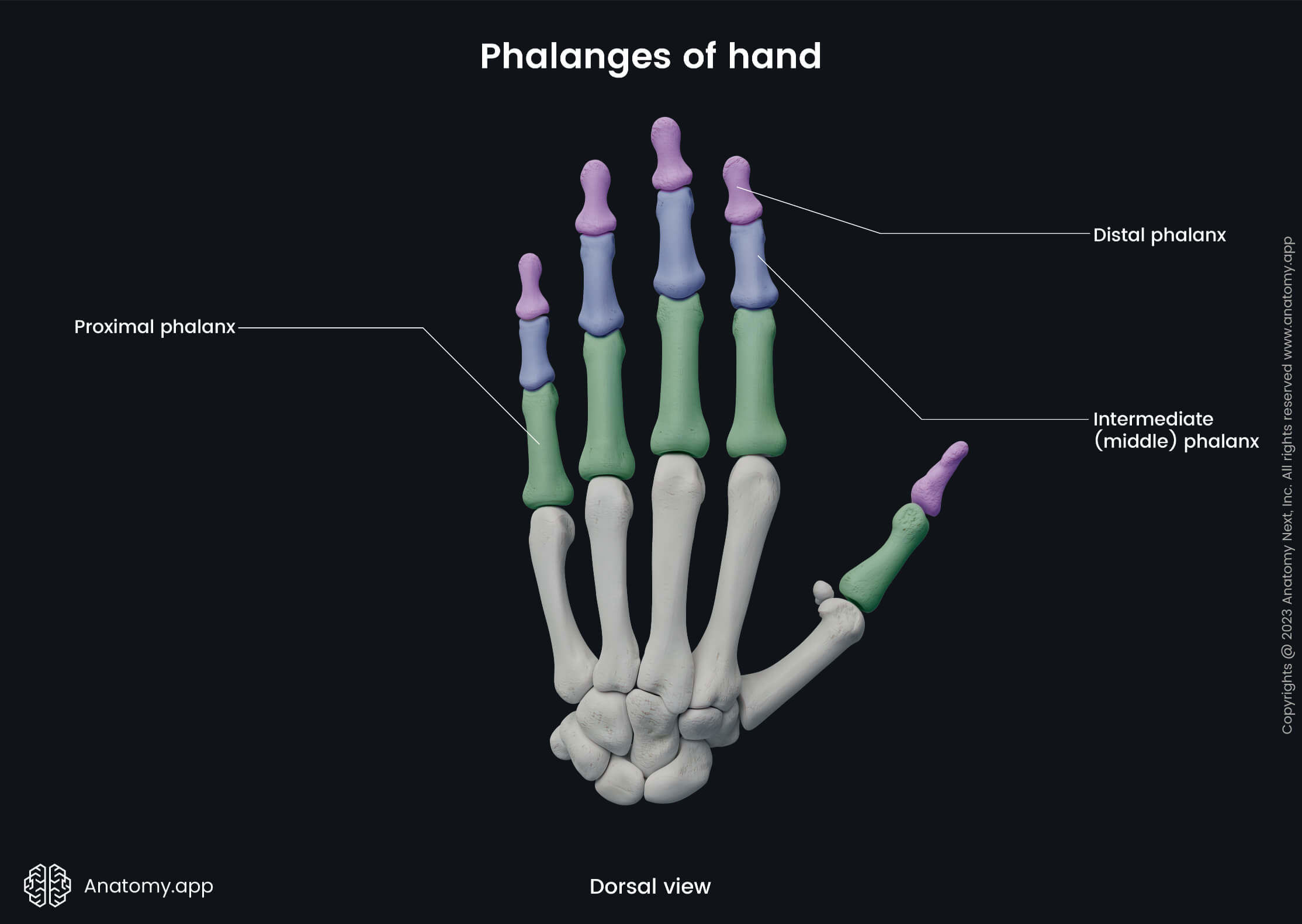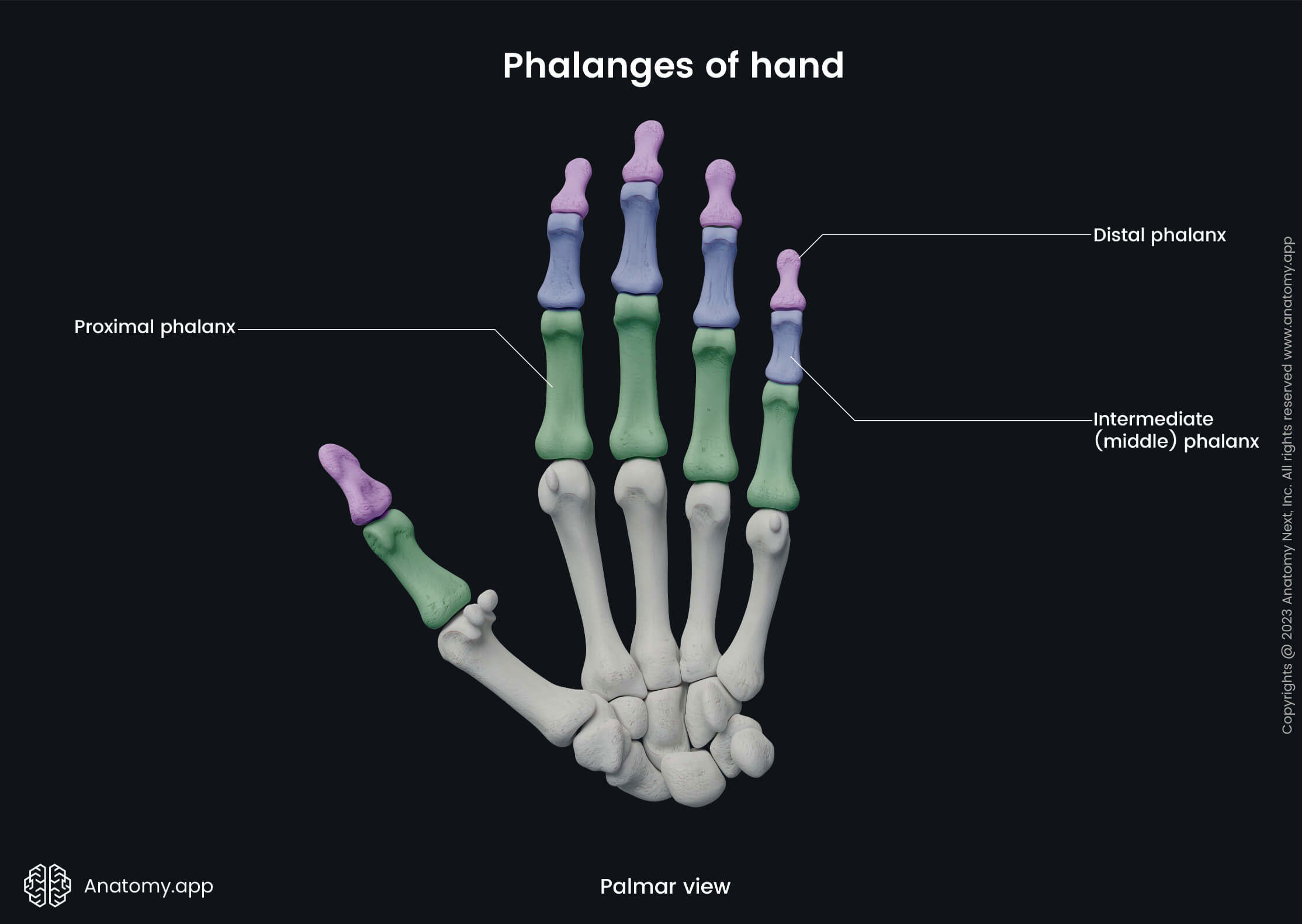- Anatomical terminology
- Skeletal system
- Skeleton of trunk
- Skull
-
Skeleton of upper limb
- Bones of shoulder girdle
- Humerus
- Bones of forearm
- Bones of hand
- Skeleton of lower limb
- Joints
- Muscles
- Heart
- Blood vessels
- Lymphatic system
- Nervous system
- Respiratory system
- Digestive system
- Urinary system
- Female reproductive system
- Male reproductive system
- Endocrine glands
- Eye
- Ear
Bones of hand
The bones of hand (Latin: ossa manus) participate in the formation of the terminal part of the upper limb. The hand is composed not only of bones but also of muscles, soft tissue, as well as ligaments and tendons that allow a large amount of movement and dexterity.

The bones of the hand are subdivided into three groups:
- Carpal bones (8) - located most proximal;
- Metacarpal bones (5) - form the middle part;
- Phalanges (14) - situated most distal.
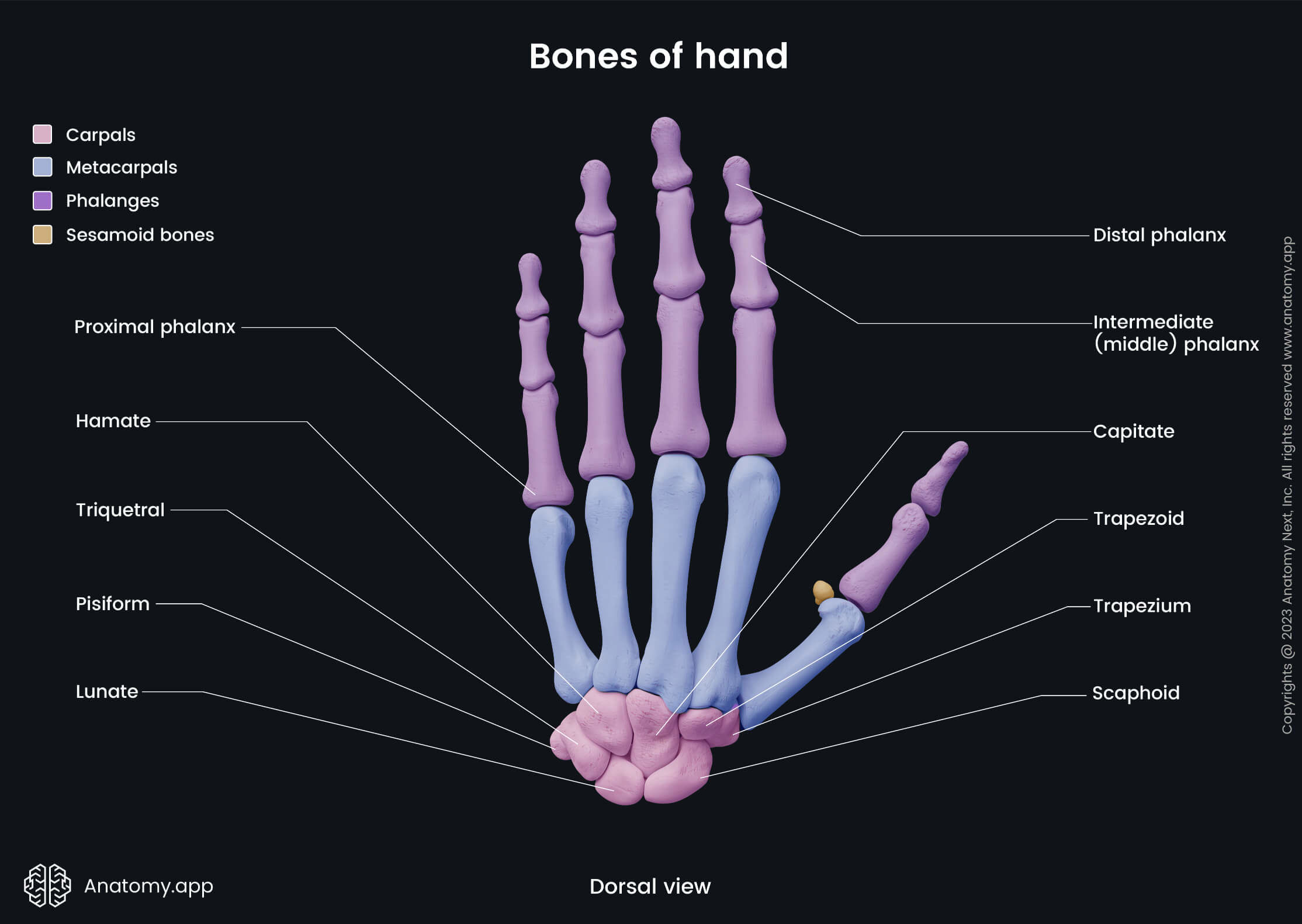
The human hand typically has five digits - a thumb and four fingers. The skeleton of each hand is usually composed of 27 bones. Sometimes the hand contains some accessory bones called the sesamoid bones that vary in number in each individual.
Carpal bones
The carpal bones are eight proximal bones that create the wrist. These bones are arranged in two rows, and each row contains four carpal bones. The proximal row of the carpal bones articulates with both forearm bones known as the radius and ulna.

The proximal row include the following carpal bones:
Four bones forming the distal row are as follows:

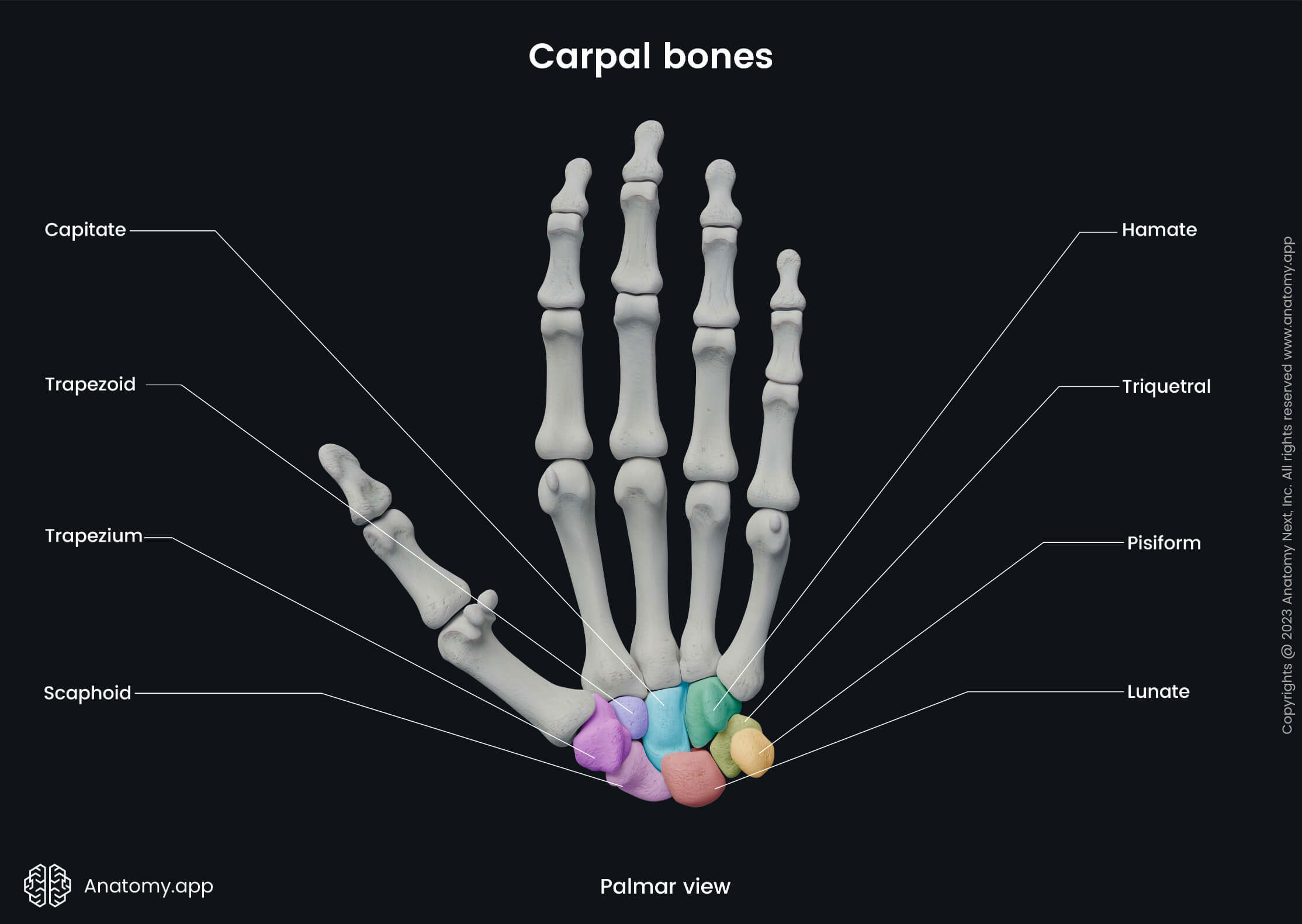
Metacarpal bones
The metacarpal bones are five long bones located in the middle part of the hand between the carpal bones and the phalanges. Between two metacarpal bones is present a space called the interosseous metacarpal space.
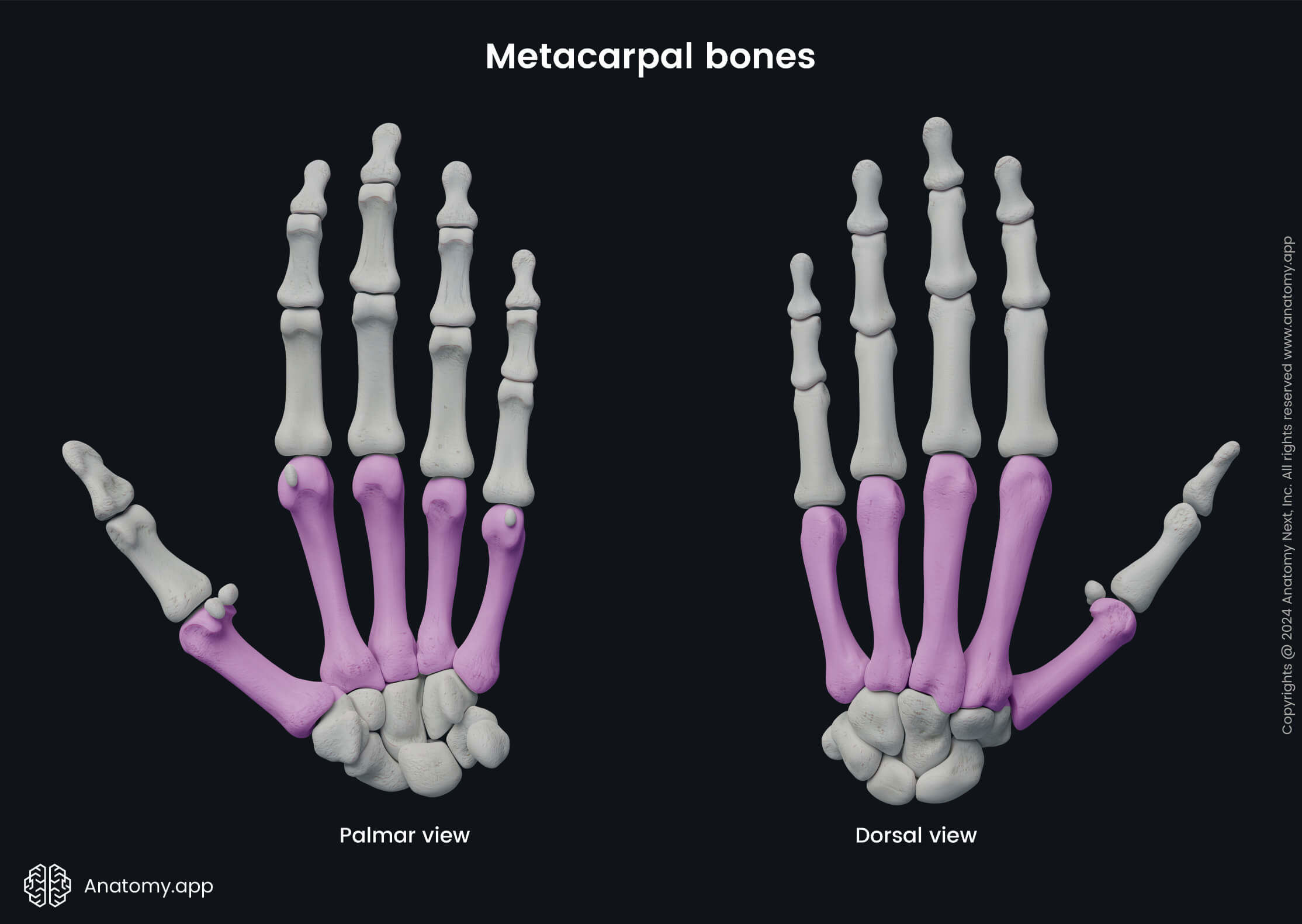
The numbering of five metacarpal bones starts from the radial to the ulnar side of the hand, and each metacarpal bone is associated with a specific finger:
- First metacarpal or metacarpal I - associated with a thumb;
- Second metacarpal (II) - with an index finger;
- Third metacarpal (III) - associated with a middle finger;
- Fourth metacarpal (IV) - with a ring finger;
- Fifth metacarpal (V) - associated with a little finger.

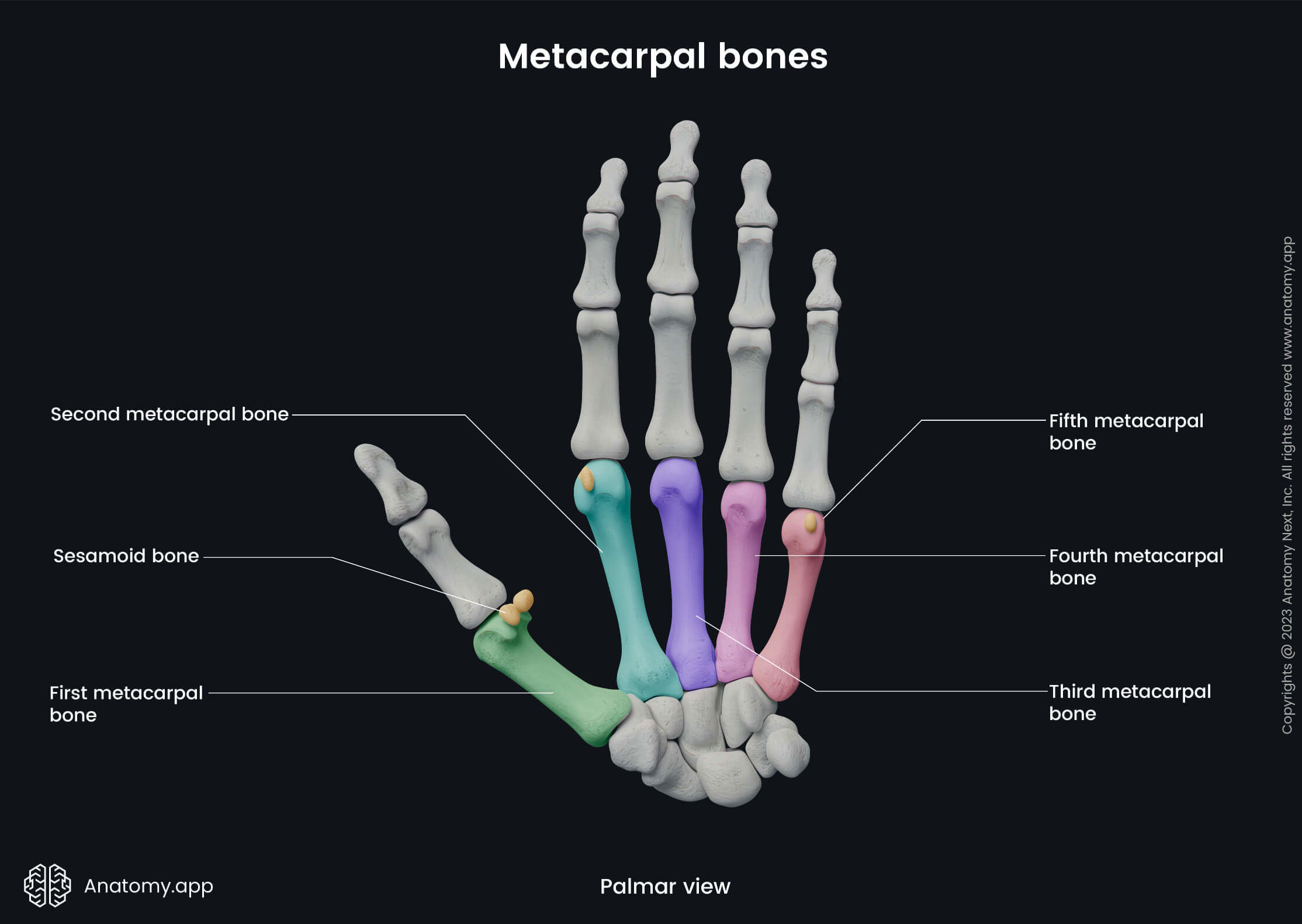
Phalanges
Fourteen phalanges of the hand, the same as in the foot, are the most distal bones that compose fingers.
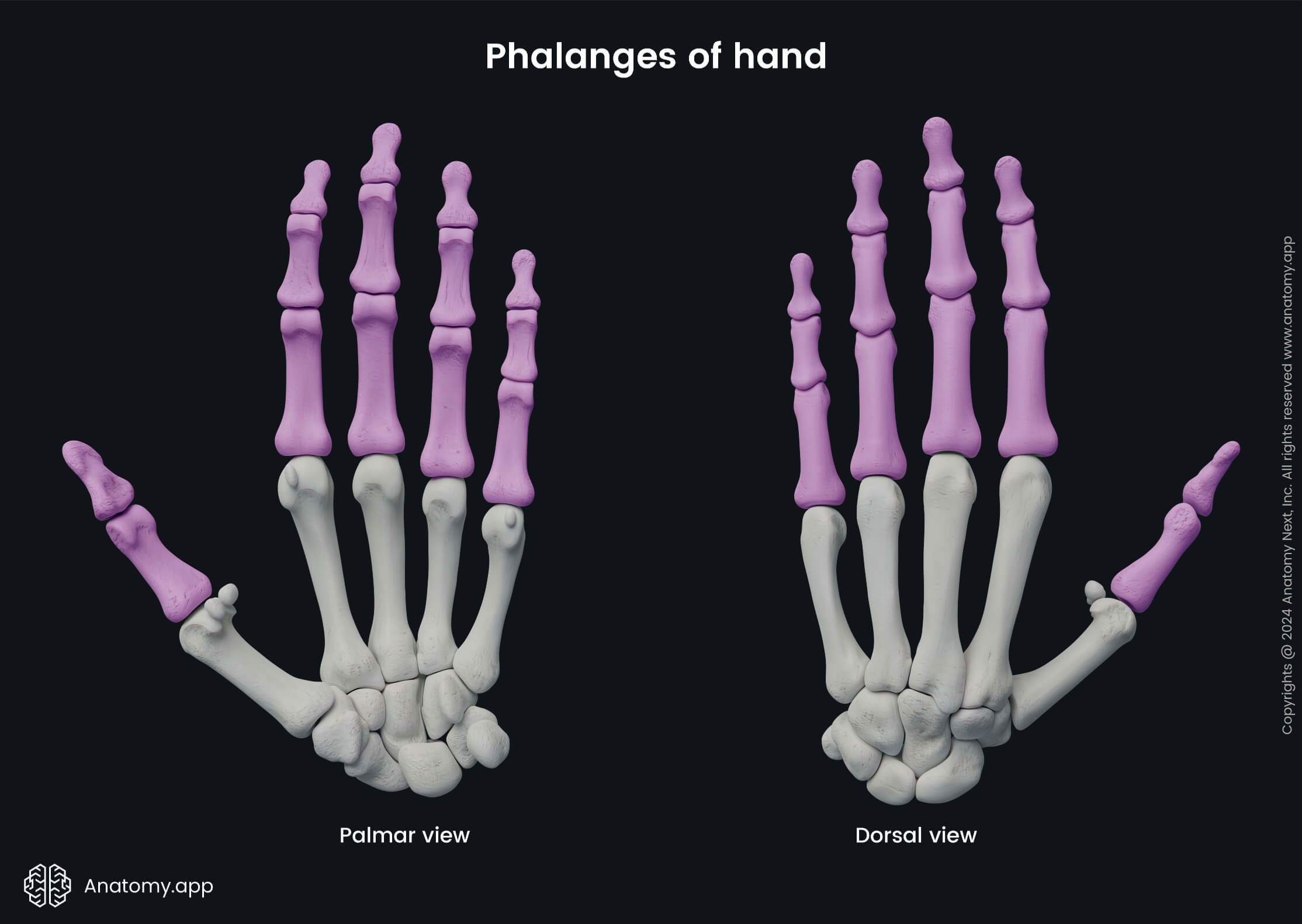
All fingers contain three phalanges (proximal, intermediate (middle), and distal), except the thumb, which is made of two phalanges (proximal and distal).
